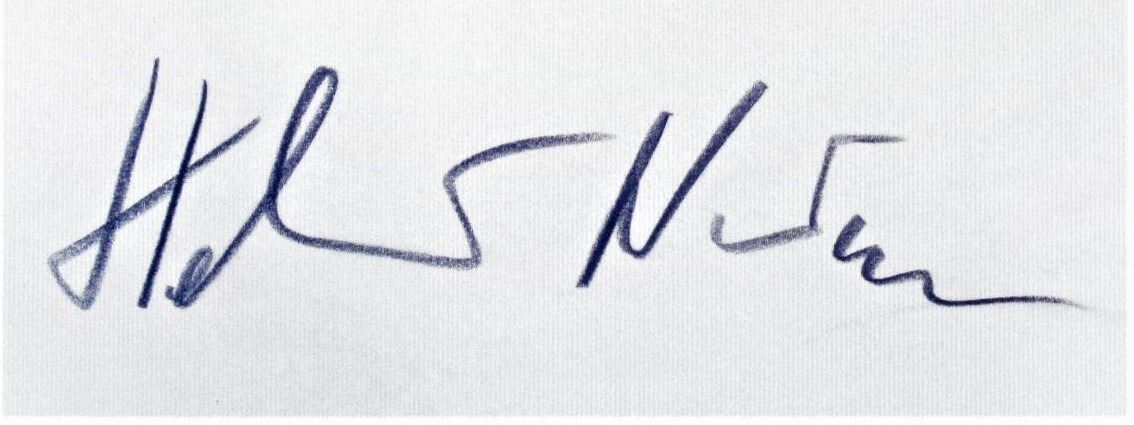Helmut Newton
1920-2004
Any questions?
contact@mr-expert.com
Do you own a piece by Helmut Newton and would you like to know more about the work and its value? Our Experts will carry out a free appraisal of your photograph, provide you with an estimate of the market price, and help you to sell it at the best price.
Who is Helmut Newton?
Helmut Newton was born Helmut Neustädter in Berlin on 31 October 1920 to Max Neustädter, a wealthy button manufacturer, and his mother Klara (née Marquis). Klara was a widow with a son, Hans, when she married Max, a soldier from Silesia who took over the management of the button factory left behind by her late husband. Nicknamed the King of Kink, Helmut Newton was one of the great photographers of the 20th century who radically changed fashion photography by redefining the way women were portrayed in high fashion advertising. Newton paved the way for more provocative and daring fashion photography. Incorporating complex themes of sexuality and desire into his work, he showed that fashion photography had the potential to explore the human condition in all its depth.
Status, price and valuation of the photographer Helmut Newton
Price of an artist’s photograph at auction: €1,000 – €500,000
If you would like to have a Newton photograph appraised, our photo experts are available for a free valuation.
Fashion, the female nude and admiration for cinema
Newton took fashion photography out of the studio and into the vitality of the street, bringing the immediacy and dynamism of the paparazzi to his work. “A woman doesn’t live in front of a white paper,” he says, referring to the studio, “she lives on the street, in a car, in a hotel room.» By bringing a journalistic element to his photographs, he imbued them with a human interest. Newton expressed through photography the idea that women’s sexuality could empower them. The women he depicts are independent and in control. He encourages the viewer to question the sexual objectification of women by forcing them to confront their own voyeuristic gaze. Newton, borrowing from film, erotica, journalism and art, gives no credence to the distinction between high and low brow art forms, a theme shared by many modern artists. What makes Newton’s contribution unique is that he brought these influences to fashion advertising. Newton’s admiration for cinema, particularly Film Noir, is evident in his preference for black and white films, seductive women and mysterious narrative elements. He uses elaborate sets, very posed scenes, and of course glamorous clothing, but at the heart of the photographs, they are always at the service of human emotion.
Some important works in his career
Fashion shoot for Australian Wool Board, Melbourne, Australia (1959): This image, part of his series of outdoor portraits of the ‘modern woman’, takes fashion photography out of the studio and onto the street, perfectly characterising the irreverent style that would become Newton’s signature.
How to Make the Fur Fly, British Vogue, London (1967): This is an important early example of the narrative quality of his fashion photography, as well as his willingness to take risks. The shoot was risky, as not only did Newton have to find a pilot at the last moment, but the model had to run in front of the plane at the last moment to capture both in the same shot. The phrase ‘flying the fur’, which means ‘creating a commotion’, suggests the effect of Newton’s photograph on the conservative and artificial world of fashion, making the furs fly down the fashion runway as much as they fly down the aeroplane runway in this figurative photograph.
Elsa Peretti in Halston Bunny Costume, New York (1975): Inspired by her Playboy experience, which allowed her to freely explore the eroticism and sensuality of the female body, this photograph takes a private night-time fantasy world and brings it into the open. The backdrop of the metropolis, with rows of windows rising high, evokes the hidden voyeurism present in conservative urban life. Helmut Newton saw this as a photograph that embodied the 1970s; mixing the two worlds of erotic and fashion photography, Newton represents the openness of his exploration of sexuality as the grip of traditional moral values loosened after the sexual liberation of the 1960s.
Recognising Helmut Newton’s signature
Like many artists, Helmut Newton did not sign all of his works. However, you will find below an example of the signatures to give you an idea. Variations of these signatures do exist, do not hesitate to contact one of our experts to formally authenticate a signature.

Appraise and sell a photograph by Helmut Newton
If you own a Helmut Newton photo, ask for a free estimate via our online form.
You will then be contacted by a member of our team of experts and auctioneers to give you an independent view of the market price of your painting. In the event of a sale, our specialists will also advise you on the various options available to sell your work at the best price.